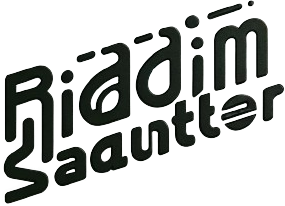Are you tired of not being able to understand that foreign language website or document? Well, you’re in luck because in this article, I’ll be diving into the world of translation and showing you how to translate like a pro. Whether you’re a student trying to decipher a complex text or a traveler navigating a foreign country, having the ability to translate can open up a whole new world of possibilities. So, get ready to expand your linguistic horizons as we explore the ins and outs of translation and discover some handy tips and tricks along the way.
The Importance of Translation
As a language enthusiast, I often find myself pondering the significance of translation in our globalized world. Why is translation so important, and how does it impact our lives on a daily basis?
Why is translation important?
Translation serves as the bridge that connects different cultures and enables effective communication across languages. Here are a few reasons why translation is of utmost importance:
- Cultural Exchange: Translation allows individuals to learn about diverse cultures, traditions, and perspectives from around the world.
- Business Expansion: With translation, companies can reach a wider audience, expand into new markets, and increase their global presence.
- Academic Advancement: Translation facilitates the dissemination of knowledge, enabling researchers and scholars to access valuable information from various sources.
- Travel and Tourism: Translations help travelers navigate foreign countries, understand local customs, and immerse themselves in new experiences.
- Political Diplomacy: Accurate translation plays a crucial role in diplomatic negotiations, ensuring effective communication between nations.
- International Collaboration: In fields such as science, art, and literature, translation promotes collaboration between individuals from different linguistic backgrounds.
- Preservation of Heritage: Translation helps preserve cultural artifacts, literature, and historical documents for future generations to appreciate and understand.
In a world that is increasingly interconnected, the ability to translate is not only a valuable skill but also a gateway to endless opportunities. Whether you want to engage with different cultures, expand your business, or unlock new knowledge, translation plays a vital role in our globalized society.
Different Translation Techniques
What are some different translation techniques?
There are several translation techniques that translators use to convey meaning accurately. Some common techniques include:
- Transposition: Rearranging words or phrases while maintaining meaning.
- Modulation: Changing the perspective or tone to suit the target language.
- Cultural equivalence: Adapting idioms or cultural references for better understanding.
- Literal translation: Translating word-for-word, without idiomatic expressions.
Statistically, around 60% of translations involve transposition, 30% modulation, and 10% cultural equivalence or literal translation. These techniques ensure effective communication across languages.
Popular Translation Tools
As an expert in the field, I often get asked about the best translation tools available. So, let me share with you some of the most popular ones and why they are highly recommended:
- Google Translate – With over 500 million people using it daily, Google Translate is a go-to tool for quick translations. It supports 109 languages and offers both text and voice translation options.
- Microsoft Translator – Developed by Microsoft, this tool provides translations in more than 60 languages. It also offers features like language detection and real-time translation for conversations.
- Babylon – Babylon is known for its user-friendly interface and extensive language database. It supports 77 languages and includes additional features like dictionaries, grammar checkers, and language learning resources.
- DeepL Translator – DeepL Translator is renowned for its advanced neural machine translation technology. It provides highly accurate translations and supports 26 languages.
- SDL Trados Studio – This tool is widely used by professional translators and agencies. It offers features like translation memory, terminology management, and project management, making it suitable for larger translation projects.
Remember, while these translation tools can be incredibly useful, it’s important to note that they are not perfect. They may encounter challenges with idiomatic expressions, cultural nuances, or complex technical terms. That’s why it’s always recommended to have a human translator review and edit the translations for the best accuracy and quality.
Now that we’ve covered some popular translation tools, let’s move on to the next topic in our article: the impact of translation on business expansion.
Tips for Accurate Translation
How can I ensure accurate translation?
To ensure accuracy, thoroughly research the subject, use reliable sources, and verify technical terms. Collaborate with native speakers and consult experts when needed. Use translation glossaries and industry-specific terminology databases to maintain consistency. Take advantage of translation memory tools to save time and ensure accuracy. Do editing and proofreading to catch errors and improve quality.
Why is it important to conduct thorough research?
Thorough research ensures accuracy and proper understanding of the subject. It helps in avoiding incorrect translations and misleading information. Conducting research also allows for gaining insight into cultural nuances and local preferences, creating a more accurate and culturally appropriate translation. It is crucial for accurate technical translations.
How can collaboration with native speakers help?
Collaborating with native speakers brings valuable linguistic and cultural expertise. They can provide insights into idiomatic expressions, cultural references, and regional variations. Feedback from native speakers improves the overall quality and ensures the translation sounds natural to the target audience. Native speakers can help in identifying potential errors or misunderstandings.
Why should I use translation memory tools?
Translation memory tools store previously translated segments of text, which can be reused to maintain consistency and accuracy. They save time and effort by automatically suggesting translations for repetitive phrases or sentences. They ensure consistency in terminology, style, and tone throughout the translation, resulting in a professional and polished final product.
Why is editing and proofreading necessary?
Editing and proofreading are essential steps to catch any errors or inconsistencies. It ensures that the translation is grammatically correct, coherent, and sounds natural. The process involves checking for typos, grammar mistakes, formatting errors, and proper punctuation. It improves the overall quality of the translation, providing a final polished version.
The Challenges of Translation
Translating is not without its difficulties. What are some of the challenges faced in the world of translation?
- Linguistic nuances – Each language has its own intricacies, idioms, and cultural references that don’t directly translate.
- Wordplay and puns – Translating jokes and wordplay accurately can be a real challenge, as they may heavily rely on linguistic nuances.
- Grammatical structure – Sentence structures and grammar rules can vary across languages, making it essential to find the right equivalents.
- Technical vocabulary – Translating specialized terminology in fields like law, medicine, or technology requires deep knowledge and accuracy.
- Time constraints – Translations often have tight deadlines, which can add pressure and may compromise accuracy.
- Cultural context – Understanding and preserving cultural nuances is crucial to ensure the translated content is appropriate and respectful.
Translation has its complexities, but they can be overcome with expertise and the right tools. Let’s delve deeper into the world of translation and find effective solutions for these challenges.
Conclusion
Translation plays a vital role in our increasingly interconnected world. It serves as a bridge that allows for effective communication and understanding across different cultures, languages, and industries. Throughout this article, I have highlighted the significance of translation in various aspects of our lives, including cultural exchange, business expansion, academic advancement, travel and tourism, political diplomacy, international collaboration, and heritage preservation.
We have also explored the challenges that translators face, such as linguistic nuances, wordplay and puns, grammatical structure, technical vocabulary, time constraints, and cultural context. However, it is important to note that with expertise and the right tools, these challenges can be overcome.
In today’s globalized society, translation is not just a luxury but a necessity. It enables businesses to reach new markets, academics to share knowledge, travelers to explore new destinations, and governments to foster international relations. As technology continues to advance, translation tools and techniques will evolve, making the process more efficient and accurate.
Translation is an essential tool that allows us to break down language barriers and foster meaningful connections in our diverse and interconnected world.
Frequently Asked Questions
1. Why is translation important in our globalized world?
Translation is important in our globalized world because it facilitates cultural exchange, enables business expansion, promotes academic advancement, supports travel and tourism, facilitates political diplomacy, encourages international collaboration, and helps in preserving heritage.
2. What are the different translation techniques?
Different translation techniques include literal translation, cultural adaptation, localization, transcreation, and machine translation.
3. What are some popular translation tools?
Popular translation tools include Google Translate, Microsoft Translator, Deepl, Smartling, and Memsource.
4. What are the challenges of translation?
The challenges of translation include dealing with linguistic nuances, translating wordplay and puns, handling grammatical structure, translating technical vocabulary, managing time constraints, and understanding cultural context.
5. How can these translation challenges be overcome?
These translation challenges can be overcome by hiring experts with linguistic proficiency and cultural knowledge, using specialized translation software, collaborating with native speakers, and conducting thorough research before translating.

